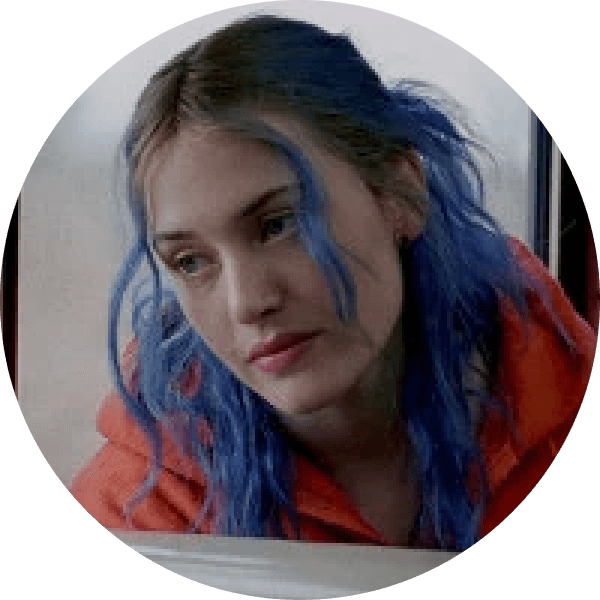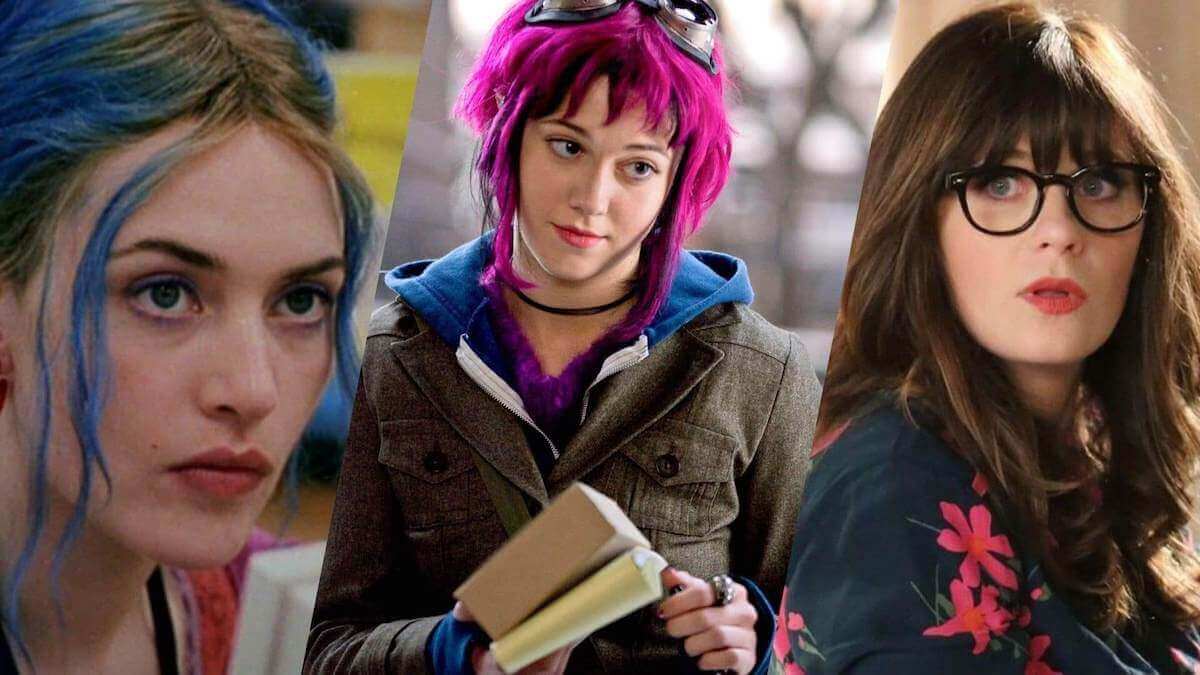Here lies the Manic Pixie Dream Girl. She was written into this world without a care in the world, and now the majority of movie-goers, filmmakers, writers, and well, human beings, have decided maybe it’s time to put her to rest.
So let’s take a look at why that might be the case, examining this age old, albeit, completely sexist, character cliche that has reigned supreme in most romantic comedies, dramas, and other films in Hollywood.
Manic Pixie Dream Girl Meaning
Who was the pixie girl and where did she come from?
For some of you, the Manic Pixie archetype might describe some of your favorite characters. If that’s the case, I’m here for you during this difficult time.
So let’s take a trip down memory lane and see where the pixie girl came from, and why she existed in the first place.
MANIC PIXIE DREAM GIRL DEFINITION
What is the Manic Pixie Dream Girl?
The Manic Pixie Dream Girl (MPDG) is a female character trope. The stock character is a quirky or superficially “different” woman who is the love interest for the male protagonist.
The MPDG usually aides in his transformation without ever showing any real agency of her own. She is a vivacious character whose main purpose is to teach the male protagonist that life is worth embracing.
Film critic Nathan Rabin coined the term in his original review of Elizabethtown, writing that the MPDG “exists solely in the fevered imaginations of sensitive writer-directors to teach broodingly soulful young men to embrace life and its infinite mysteries and adventures.”
MANIC PIXIE DREAM GIRL EXAMPLES
- Claire Colburn - Elizabethtown
- Sam Feehan - Garden State
- Allison - Yes Man
- Summer - (500) Days of Summer
- Ramona Flowers - Scott Pilgrim Versus the World
- Penny Lane - Almost Famous
The Manic Pixie Dream Girl trope comes from decades (really centuries in storytelling) of the same thing⏤male writers writing male characters...and/or male directors directing them.
And don’t get me wrong, I enjoy all perspectives, male included. And any person, regardless of gender, is capable of writing these characters. But looking back in Hollywood history, male-dominated perspectives often left us with underdeveloped female characters that offered nothing more than the idea that women are there to help men change, and men need women in order to change.
Watch a bit more about this below.
Manic Pixie Dream Girls
Let’s take a look at some classic Manic Pixie Dream Girl examples, and maybe see why it’s time to say goodbye.
And then we can talk about a few other characters that are falsely mistaken as pixie dream girls — maybe they can live.
Manic Pixie Dream Girl Examples
Examples of the pixie girl in film
The manic pixie dream girl wasn’t always a thing, but when the term entered the pop culture lexicon, it became clear that there are a lot of MPDG’s out there.
Claire Colburn in Elizabethtown
Claire Colburn is the first manic pixie dream girl
Cameron Crowe’s Elizabethtown gives us our first, labeled, MPDG.
Nathan Rabin made up the phrase to describe the sort of ridiculous-ness of Kirsten Dunst’s character. The fantastical, super bubbly, almost other-worldy character, hence “pixie” girl, who helps Orlando Bloom’s character, find his way.
Sam Feehan in Garden State:
How to be a manic pixie dream girl
I’ll be the first to say, I love Garden State regardless of the fact that it employs one of the most obvious examples of the Manic Pixie Dream Girl.
Zach Braff writes the film, directs it, stars in it, and has a hand in producing it. So it’s not super surprising, though well-intentioned, that the love-interest, Sam Feehan, is there to serve his character. Of course she serves the story, but the story is all about him. And I love Sam, she’s smart, funny, experiences her own pain and struggles, (is also a pathological liar)⏤she isn’t a flat character by any means. But there’s no real transformation for her. Hopefully she’ll stop lying...?
The plot shows the protagonist coming back home for his mother’s funeral; grappling more with his complete indifference towards her death than the pain of it. He meets quirky Sam and finally feels something again. So, thanks for that Sam.
Allison - Yes Man
Allison the Manic Pixie Dream Girl
Unorthodox, spontaneous, moped riding, Allison from Yes Man, is hilarious and almost fully developed, but still serves one purpose. Written by Jarrad Paul, Nicholas Stoller, Andrew Mogel, and directed by Peyton Reed, the film uses the trope to serve Jim Carrey’s natural ability to say “yes” to new things.
Deschanel expresses her frustration with the cliche by expressing on Slate:

“When you get sent scripts and you see you’re always playing someone’s girlfriend when you want to be the central role, it’s so depressing. As a comedienne, it felt so frustrating to always be setting up someone else’s comedic moment.”
— Zooey Deschanel
Not to mention, even these female characters that don’t appear to have any agency in the film, do have nuances, but are somehow still lumped into this one category.
- If they’re pretty, eccentric, or depart even just a little from the mainstream heroine, they must be the same!
Allison (Zooey Desschanel) - Yes Man
Non-Manic Pixie Dream Girl Movies
The mistaken manic pixie dream girl
Nathan Rabin, the originator of the term MPDG, has since written about his regret over coining manic pixie dream girl. He’s noted that the categorization, which was meant to point out misogyny in the film industry, ended up being used as a cudgel against certain female characters.
So with that in mind, let’s look at some examples of characters who have been unfairly regarded as manic pixie girls.
Clementine in Eternal Sunshine of the Spotless Mind
Clementine (played by Kate Winslet) is the agent of change in her life. In fact, all of her decisions throughout the film are solely for herself---whether that’s staying out late when she’s bored with Joel, ignoring her new, occasionally annoying, boyfriend, Patrick (played by Elijah Wood), she does what she wants.
She even screams, what is now a famous quote that explicitly excludes her from the MPDG trope. Watch below.
Clementine in Eternal Sunshine of the Spotless Mind

“Too many guys think I’m a concept, or I complete them, or I’m gonna make them alive. But I’m just a f*cked-up girl who’s lookin’ for my own peace of mind; don’t assign me yours.”
— Clementine
Charlie Kaufman’s scripts have some of the best lines, but it’s clear that it’s not just because they sound good, or read well. The character of Clementine in Eternal Sunshine of the Spotless Mind is a fully realized human being, who doesn’t exist for the purpose of anyone else but herself.
Kat in 10 Things I Hate About You
In a worse film, Kat could be a quintessential manic pixie dream girl. She is overtly “not like other girls,” and slightly troubled in a way that could scream “I can fix her.” But in 10 Things I Hate About You, Kat is far more complex than a trope.
She undergoes change, and reveals herself to be very different from her outside exterior. If anything, her love interest, Patrick, is a bit of a manic pixie dream boy– prompting her character’s self-examination and growth. But of course, that’s not being fair to Patrick, who is a fully fleshed out character as well.
Amy in Gone Girl
Now, there are few people who would mislabel Amy Dunne as a manic pixie dream girl. But she’s worth mentioning because, in a way, she represents the transition point out of the MPDG era.
Cool girl monologue
Amy’s “cool girl” monologue could be considered the final blow to the MPDG trope. Her character outlines just how much of a farce the stereotype is, and how it simply comes from male entitlement and unrealistic expectations.
So Long to the Pixie Girl
Why we won’t miss pixie dream girl
As we've noted, Nathan Rabin wrote a letter of apology for creating the term. In it he reminisces how “[he] looked on queasily as the phrase was increasingly accused of being sexist itself.”
Just to be clear, Nathan Rabin is not responsible for this remissive categorization. He simply gave the pre-existing sexism a name.
In fact, “[he] coined the phrase to call out cultural sexism and to make it harder for male writers to posit reductive, condescending male fantasies of ideal women as realistic characters.”
But unfortunately, that’s not what happened.
Screenwriters create more pixies, and even novelists write books about them. (author, Tom Leveen writes“Manicpixiedreamgirl”).
In the years after Rabin’s Elizabethtown review, there was a ton of criticism for a well-intentioned critique. From Zoe Kazaan labeling the trope as pure misogyny to the actual rise of the trope, giving the idea a home, he consequently, gave it a whole lot of power.
Thankfully, contemporary culture has brought us new female writers and directors with varying perspectives that this cliche is at its end.
Related Posts
Nowadays, as film and television competes in complexity with great literature, writing female characters (or “Manic Pixie Boys” because yes, that is also unfortunately a thing), without any agency, is really just bad writing.
And this applies to films that include same-sex couples too.
We want fully fleshed out characters with their own agency, regardless of gender, who are in conflict with other characters based on who they are and what they want. Not so one dimensional that they only serve a single purpose.
So witty, quirky, women aren’t the problem. But making sure that their wittiness, their quirkiness, exist for some male fantasy, is dead.
UP NEXT
How to Write a Meet Cute
Now that you understand how important it is to write stronger, less-predictable women characters, let’s read up on how to write that scene where she meets her partner for the first time. Do away with conventions and revitalize this plot point to make it less cringe-y.
